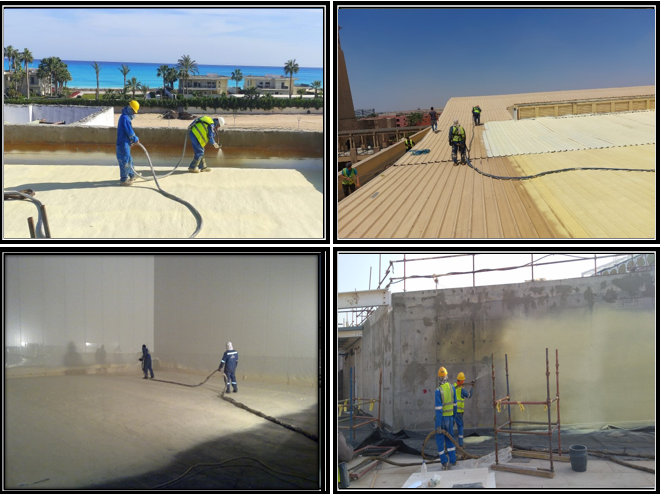Our Services
Spraying PU Foam Systems (SPF)
Introduction
SECC is a leading company in the insulation field using polyurethane foam systems SECC insulation systems and equipment are based on the latest American & European technology.
SECC successfully conducted hundreds of projects in Egypt and Qatar as well as several other countries
Polyurethane foam insulation systems provide perfect solution for water proofing and thermal insulation requirement, it saves up to 50% of total energy requirement, it saves up to 50% of total energy consumption and the saving persists up to the age of the structure.
Furthermore, insulated buildings often require smaller heating and air conditioning units leading to additional money saving for the owners.
SPF Insulation Fields of Application
Since 1990 SECC participated in a variety of insulation applications including but not limited:
- Residential buildings roofs and walls.
- Commercial buildings roofs and walls.
- Cold stores floors.
- Poultry houses roofs and walls.
- Agricultural buildings.
- Steel structure corrugated roofs.
- Livestock buildings.
- Storage buildings.
- Workshops
Why we excel over others?
- More than twenty years of experience.
- ISO 9001-2008 certificate.
- Superior insulation effectiveness.
- Job accomplishes in a timely manner.
- High qualified personnel.
- High technology equipment.
- Competitive prices.
- Free seminars to introduce our products.
System Description
Closed-cell, rigid sprayed polyurethane foam is produced by an exothermic reaction between a polyol component and isocyanate using a high-pressure solvent free-air purging mixing machine, at the end of the reaction phase, the foam begins to solidify and cure. Applied with a spray gun in several layers provides a seamless thermal and water proofing protection to the substrate. The field of application covers virtually all areas of flat and pitched roofs, ceilings, walls and floors. PU foam systems are produced directly on the substrate to be insulated using a pouring or spray process, the material forms a continuous and even insulating layer with no joints or gaps eliminating any thermal bridges. Spray foam is the ideal solution for a very wide variety of surfaces and shapes because the material adapts to any profile without gaps. A comparison with conventionally insulation (same thickness) clearly shows that PU foaming system is characterized with better thermal resistance and lower cost





